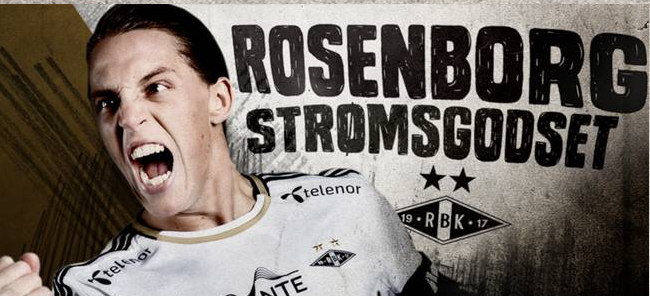History Repeats as Golden State Warriors Small Ball Playoff Lineup Finds Success Again (Photo: Melissa Majchrzak/Getty Images via Bleacher Report)
“Once is happenstance. Twice is coincidence. The third time it’s enemy action.”
While Ian Fleming’s James Bond novel Goldfinger might not be directly applicable to what’s happening with the Golden State Warriors this post-season, the many variations of the classic phrase would do well to describe the team’s second consecutive playoff renaissance.
An injury to David Lee in the first game of the 2013 NBA playoffs forced the Warriors to play a different style of basketball than they had for most of the season, installing Harrison Barnes as starting power forward in Lee’s Stead.
The result, as we all know, was a stellar twelve-game run that saw the Warriors as the only team to defeat the San Antonio Spurs, doing so twice following an opening-round upset of the Denver Nuggets.
Despite losing the series against he Spurs in six games, the Warriors emerged from the playoffs as the proverbial “media darlings” for their exciting and unconventional run.
The off-season addition of point-forward Andre Iguodala and opening night blowout of the Los Angeles Lakers saw the team turn heads once again, but just a few games into the 2013-14 season, it was clear the Warriors were a different team.
Much of their 51 wins were predicated on effort at the defensive end, and the Warriors finished a just 12th in the NBA in offensive efficiency, 9th in the Western Conference.
Despite a four-game improvement in the standings, the scoring struggles called into question the effectiveness of head coach Mark Jackson’s coaching, leading to rampant speculation he might not return to coach the team for a fourth season.
Once again, they finished the season as an underdog sixth seed, and are down a starting big man after the late-season rib injury suffered by Andrew Bogut.
In an effort to maintain their defensive identity, Jackson initially opted to go with 17-year veteran Jermaine O’Neal in Bogut’s place.
Through three games against the Los Angeles Clippers, the results were mixed.
The Warriors managed to steal Game 1 in Los Angeles, but a 40-point blowout in Game 2 and a tough home loss in Game 3 put them behind in the series 2-1.
Across the two losses, the Clippers young and talented frontcourt of Blake Griffin and DeAndre Jordan out-jumped and out-hustled the Warriors to rebounds and easy baskets inside.
Following the Game 3 loss, a request from O’Neal to start Draymond Green as part of a smaller lineup that had already found success in the series forced Jackson’s hand.
The Warriors commanding Game 4 win served as yet more evidence the Warriors are better than they play “small ball,” as it’s popularly known across the league.
Lee and the other Warriors big men, comprised of O’Neal, Marreese Speights, Hilton Armstrong, and Ognjen Kuzmic, combined for just under 54 minutes, including a 54-second final stretch that included all four reserves.
Outside of that final minute of garbage time, two Golden State big men shared the floor for all of 3 minutes and 36 seconds.
That’s in stark contrast to Games 1-3, in which the Warriors averaged 23 minutes per game of a traditional two-big lineup.
Green (5 rebounds, 5 assists, 2 blocks, 2 steals) and Barnes (15 points, 6-for-7 from the field) played huge roles in the Warriors 118-97 blowout win and combined for 65 minutes (nearly 20 more than they averaged through three games).
With Lee at center, the Warriors managed an offensive rating (points per 100 possessions) of 140 during Sunday’s game, more than 50 points higher than 89.2 rating the Clippers were held to across the across the same stretch.
During the regular season, the Warriors “small-ball” offensive rating is a stellar 117.4 while their defense actually improves from al 102.8 overall rating to 101.4 with Lee at center.
It’s no wonder so many fans and writers familiar with the team have called for change in strategy with Warriors center Andrew Bogut out of the picture.
The small ball option has presented itself viable once again, even if just for a single game. Despite the Warriors playing their best basketball of the season, a number of other, non-basketball distractions could have influenced the Los Angeles Clippers play.
But should starting Green prove effective for the rest of the series, it puts the Warriors in the awkward situation of having two big men due to make $50 million over the next two seasons, when their best lineups involves players making significantly less.
Over the course of the season, a number of articles have the cited the elimination of Lee’s defensive issues as the reason the Warriors are better when going small, but what of his impact in similar lineups when Bogut is resting or hurt?
Without proof that any one player’s weaknesses are responsible, perhaps it’s more prudent to say the strengths of other players, like Stephen Curry and Klay Thompson, simply shine brighter.
Their scoring efficiencies have been off the charts better when playing small, and its do in no small part to the better spacing.
Harrison Barnes and Iguodala have seen similar upticks in efficiency as well, and the Warriors are clearly better for it.
If last season was an aberration, then perhaps Game 4 is mere coincidence, as Fleming would say.
Beyond that?
Maybe the Warriors really are just better when they play small, no matter who’s healthy.
Add The Sports Daily to your Google News Feed!
